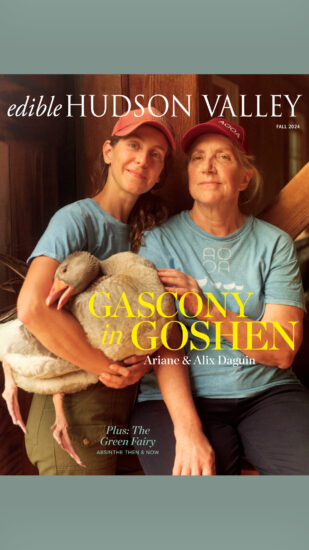New York City, the Hudson Valley, and most corners of the Northeast conjure up images of farmers’s markets, high-end cuisine, and al fresco dining. For most of us, these settings provide exciting culinary adventures that delight our palates, support our good health, and enrich life overall.
For autistic and neurodivergent individuals, however, those same multi-sensory experiences can trigger episodes of anxiety that make them want to avoid eating altogether. With 1 in 36 now diagnosed with autism, and countless others who have feeding disorders, we must find ways to support EVERYONE with whom we break bread.
Anderson Center for Autism, which provides award-winning educational, vocational, residential, and clinical services designed to carry out our mission of “optimizing the quality of life for individuals with autism,” has developed an interdisciplinary program that’s proven to be a game–changer at the dinner table and beyond. The initiative is called MEALLS (Making Eating a Lifelong Learning Skill). Based on the SOS Approach to Feeding, it uses a 25-32 step process to build nutritious eating habits. Rather than focusing on consumption itself, the objective is to cultivate a positive RELATIONSHIP with food, which ultimately makes dining enjoyable and inclusive for everyone at the table.


Although this initiative is offered specifically to Anderson students and residents and thus is not available to the public on our campus, our team at Anderson Center Consulting and Training says that you, too, can put some of the MEALLS strategies into place (and they are available for private consultations and in-home training if you have interest in that!).
Here is the gist of the approach: for starters, consider the foods a child IS willing to eat. We have a “food hierarchy” that we use as part of the MEALLS plan which essentially frames out what a child currently eats in the context of progressive goals aligned with increasing levels of tolerance. For example, if a child will eat Cheerios, we know that crunchy, round, and beige foods are in the realm of possibility. So we might look at crunchy, round, beige crackers that are more nutrient-rich and offer those as an alternative – and then move to a cheese cracker, which introduces a new color – and on from there. By the end of a 12-week period (the duration of our MEALLS program), that child is likely snacking on yellow peppers – a dream come true for parents and caregivers who are accustomed to offering a monochromatic, beige-only meal.

Hand-in-hand with that food hierarchy, of course, is the relationship-building component of our MEALLS program. That said, below are some tips – rooted in the MEALLS approach – that we think will prove useful to anyone whose child or dinner guest needs support developing connections to food (these are worth trying with all picky eaters, regardless of whether or not they have a diagnosis!) Take each step and do it for a few days or weeks before moving on to the next one; be patient with the process and make no demands of the child. Just remain consistent, keep your own energy light, and trust that you will eventually see results (and if you don’t, reach out to our team at Anderson Center Consulting and Training about those private, in-home consultative opportunities).
- Have your child sit with you at the table while everyone is eating even if you don’t think anything will get eaten; just having your child see and smell the various foods is an important first step.
- Communicate to the child that while there is NO pressure to eat anything, you are going to put the same foods on his/her/their plate that everyone else is enjoying; this exposure is an important step toward building tolerance to the foods.
- As your child grows more comfortable with the foods simply being on the plate, begin to have the child explore with a fork or touch foods with fingers. Eventually bring the food to the child’s mouth. Again, do NOT force the child to eat anything – you are helping the child build trust and get more comfortable with the colors, textures, aromas, etc. It must be a low-stress experience!
- Even if your child hasn’t touched anything on the plate, encourage interaction with the food after a meal by having your child scrape food into the garbage. Remember: it’s all about EXPOSURE.
- One day – perhaps when you are least expecting it – your child will take a bite of the same dinner you made for everyone. And our guess is that YOU will stop chewing so that your mouth can spread across your face into a well-earned smile.
While feeding disorders can make mealtime seem like an insurmountable challenge, know that there are strategies that can help everyone at your table thrive.
Our team at Anderson Center for Autism is here to help. Reach out today to learn more: andersoncenterforautism.org.
Images courtesy of Anderson Center for Autism



